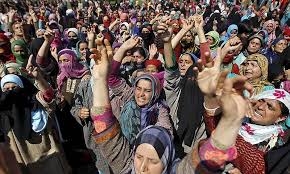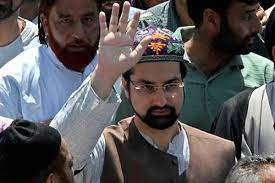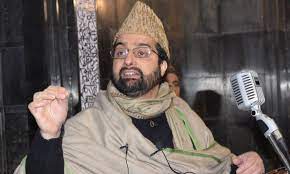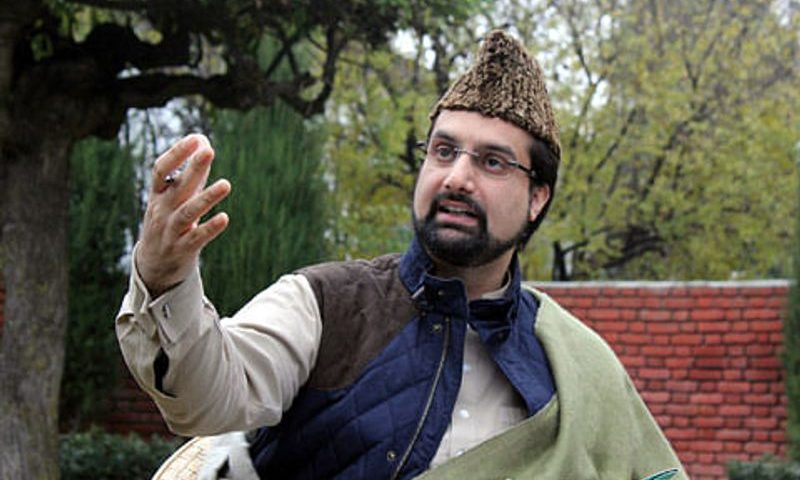Kashmir is the biggest internal security challenge that successive state governments and the Centre have had to grapple with. Modi promised to take Vajpayee’s formula of Kashmiriyat, insaniyat and jamhooriyat forward, but peace remains a serious casualty.
April 1 this year was not an ordinary Sunday. That day, 17 local Kashmiri men died. Of them, 13 were armed local militants and four were civilians — killed when they rushed to the encounter sites to protest against military action.
The bloody Sunday was a reminder of the festering insurgency in Jammu and Kashmir; of the fact that the locals are once again leaving the comfort of their classrooms and disappearing into the mountains to train as militants in makeshift camps.
It was also a reminder that Kashmiris — women included — are rushing to encounter sites despite the danger of being killed in crossfire.
Kashmir is the biggest internal security challenge that successive state governments and the Centre have had to grapple with.
Prime Minister Narendra Modi promised to take Atal Bihari Vajpayee’s formula of Kashmiriyat, insaniyat and jamhooriyat forward, but peace remains a serious casualty.
Modi spent his first Diwali in flood-affected Srinagar in 2014 but that gesture is all but forgotten in the constant trail of death. Since the Peoples Democratic Party (PDP) and the Bharatiya Janata Party (BJP) joined hands to form a government in the state in 2015, the number of locals joining militancy has gone up with each passing year.
According to official data, while only 16 local militants were active in 2013, the number jumped to 53 in 2014. After Hizbul Mujahideen commander Burhan Wani became the poster boy of new techsavvy militants, the number went up to 66 in 2015, 88 in 2016 and it swelled to 124 in 2017.
Only recently, Junaid Sehrai, the son of Tehreek-e-Hurriyat chief, Ashraf Sehrai (touted as separatist SAS Geelani’s successor) joined the ranks of militants and surprised many. Junaid is a PhD scholar from Jamia Millia University in New Delhi and an MBA from Srinagar.
The death toll of civilians and the killing of militants saw a sharp spike after Wani was killed in July 2016. The unrest that engulfed the Valley left over 100 civilians dead and thousands wounded by pellet guns that became the leitmotif of the oppressive arm of the State.
The security forces, including the army, went on the back foot and operations against terrorists were stopped, especially in South Kashmir, which became the epicentre of the unrest.

In 2017, however, more than 200 militants were killed, according to police records. State police chief SP Vaid says the number is the highest in seven years. In 2010, 270 militants were killed.
Independent observers argue — perhaps correctly — that the Kashmir problem cannot be summed up by sheer numbers. “Data does not capture the depth and spread of the widespread alienation that lies at the core of the protests that have become a daily occurrence. Why is no one asking why Kashmir’s youth are pelting stones when they should be at work or in their classrooms?” asked an observer who asked not to be named.
Kashmir, in fact, has been hurtling from one crisis to another in the past four years that the PDP and the BJP have been alliance partners. The main opposition party, headed by former chief minister Omar Abdullah, has been arguing that the alliance has acted as a red flag. Experts argue that he may not be off the mark because his successor, Mehbooba Mufti, was the one who sought votes on the pretext of keeping the BJP out of the Valley.
It hasn’t helped that the two alliance partners are pulling in different directions. The recent rape and murder of an eight-year-old in Kathua in the Jammu region is the latest example of the uneasy relationship between the two. The BJP was finally forced to drop two of its ministers, who had joined a rally in support of the rape accused, but only after Mehbooba’s brother, Tasadduq Mufti — the state’s tourism minister — spoke up, using strong language.
In an interview to Indian Express, Tasadduq Mufti said: “We were supposed to be partners in rebuilding this place but, sad to admit this, due to the non-fulfilling of commitments, we have ended up being partners in a crime that an entire generation of Kashmiris might have to pay for with their blood.” Mehbooba herself has been seeking a political resolution and has called for a dialogue with Pakistan, but her pleas remain unheard.
The prime minister has reached out on occasion, but there is no sustained political process that has been set in motion to address the alienation.
The promise to make Kashmir a “paradise again” came on August 15 in 2017, a year after the Valley had seen one of its bloodiest summers. Addressing the nation from the ramparts of Red Fort, Modi said: “Na goli se, na gaali seh, baat bane gi gale lag ke.” Promising to embrace Kashmir, he said neither bullets nor brickbats would work.
“The problem is this government (at the Centre) lacks sincerity,” says Kashmir watcher and former bureaucrat Wajahat Habibullah.
He points to the fact that a lot of talking is done by the Army chief, who until recently, has argued against any dialogue process.
General Bipin Rawat had also commended an officer who tied a Kashmiri to the bonnet of a jeep to escape a stonethrowing crowd.
Some balm was sought to be applied when the National Democratic Alliance (NDA) government appointed former Intelligence Bureau director Dineshwar Sharma as an interlocutor to hold talks with all stakeholders. But not only has Sharma been boycotted by the separatists, even trade associations have refused to meet him.
On his recommendation, the Mufti government worked out an amnesty scheme for first-time stone-pelters, but that is only a small step in a place that has been in the grips of a persistent insurgency for three decades.
Mehbooba has been urging the prime minister, even at a meeting last week, to initiate a meaningful political process. But Habibullah says: “The lack of a policy is harming the state.” Till a clear policy is framed, Kashmir will continue to lurch from crisis to crisis.






